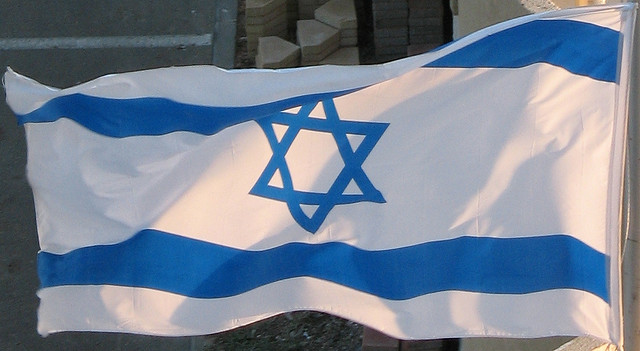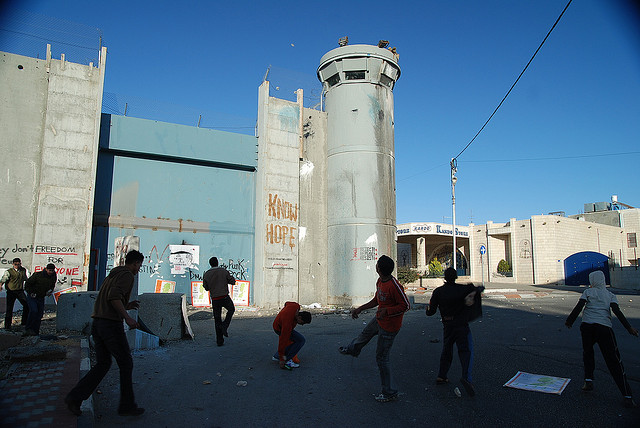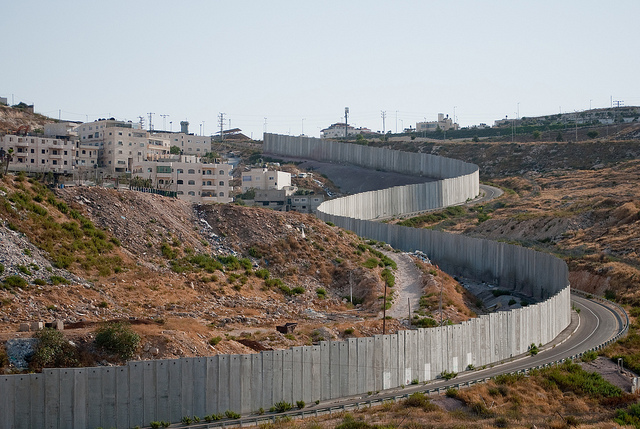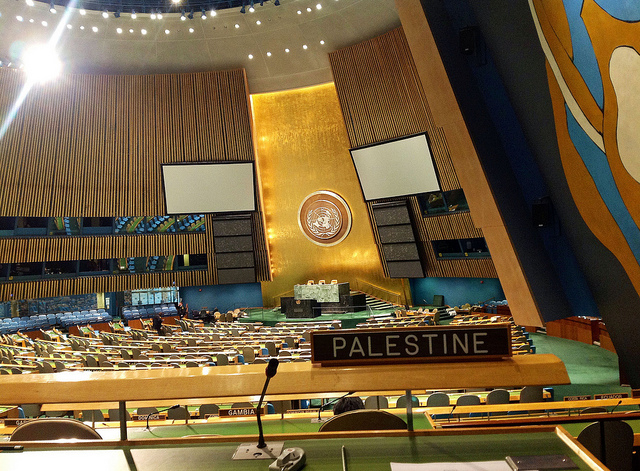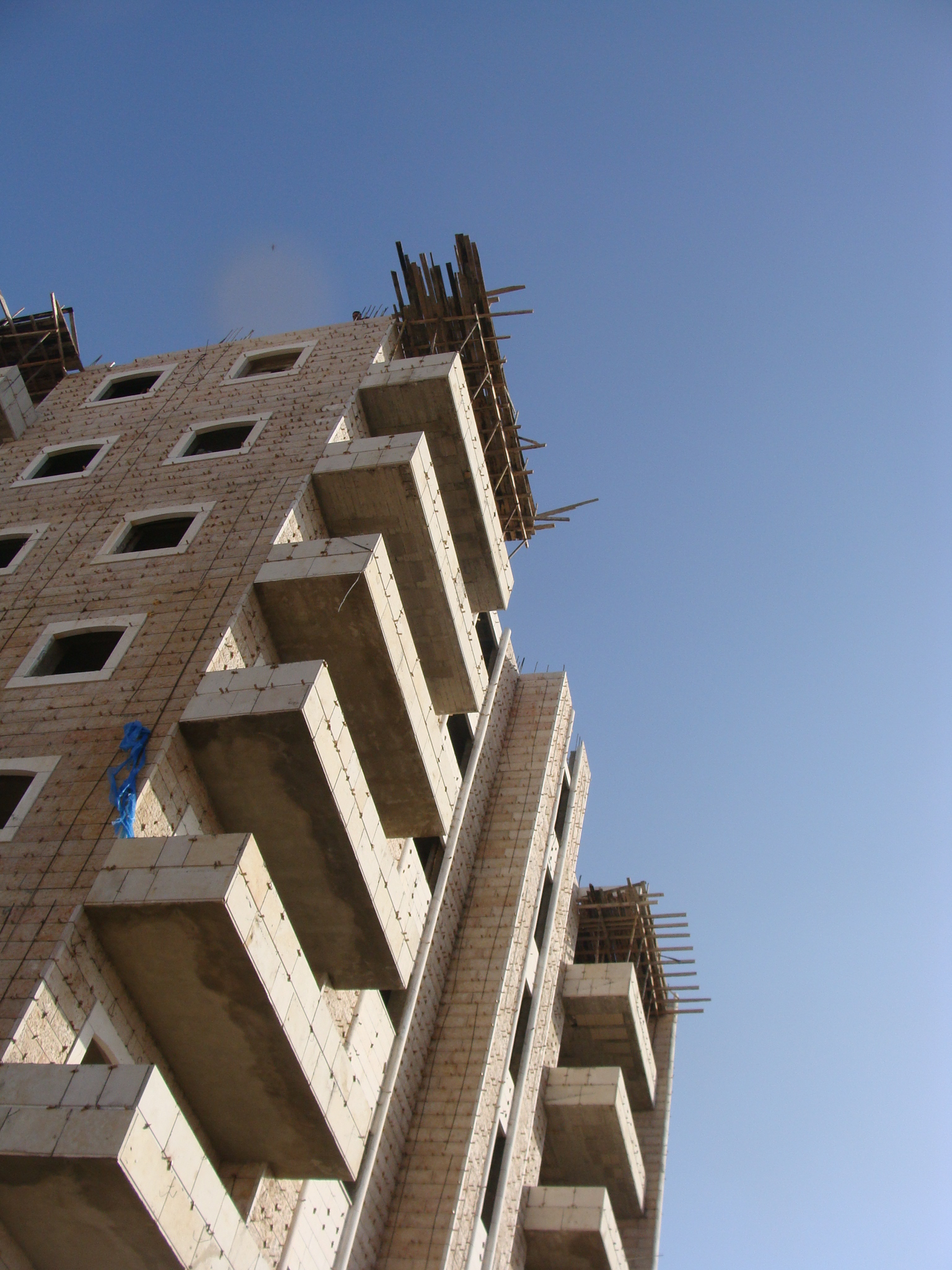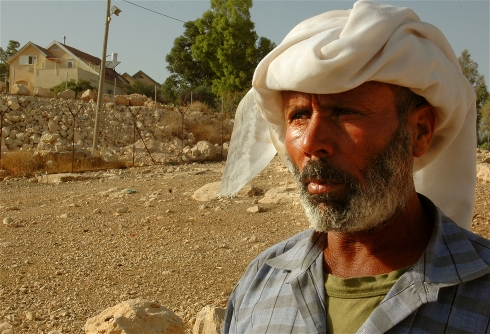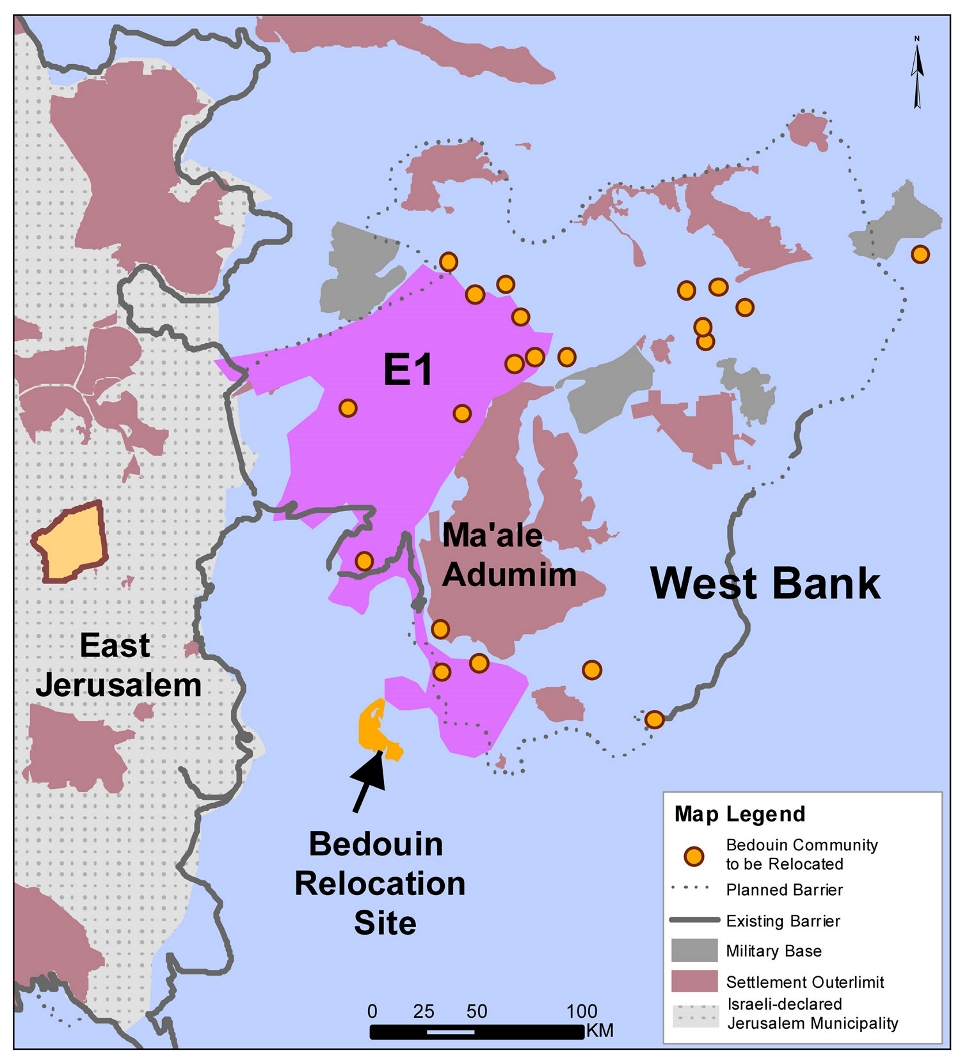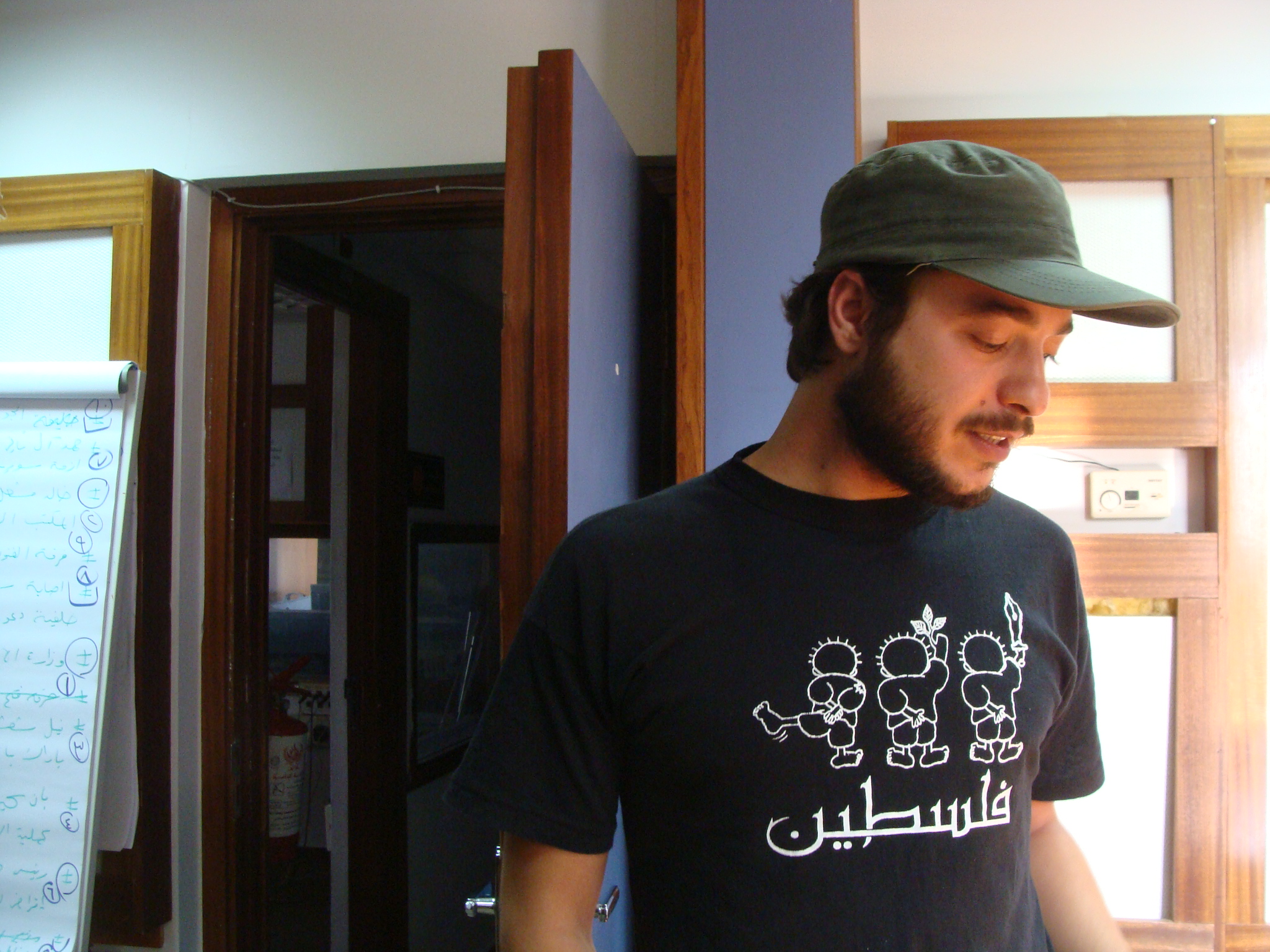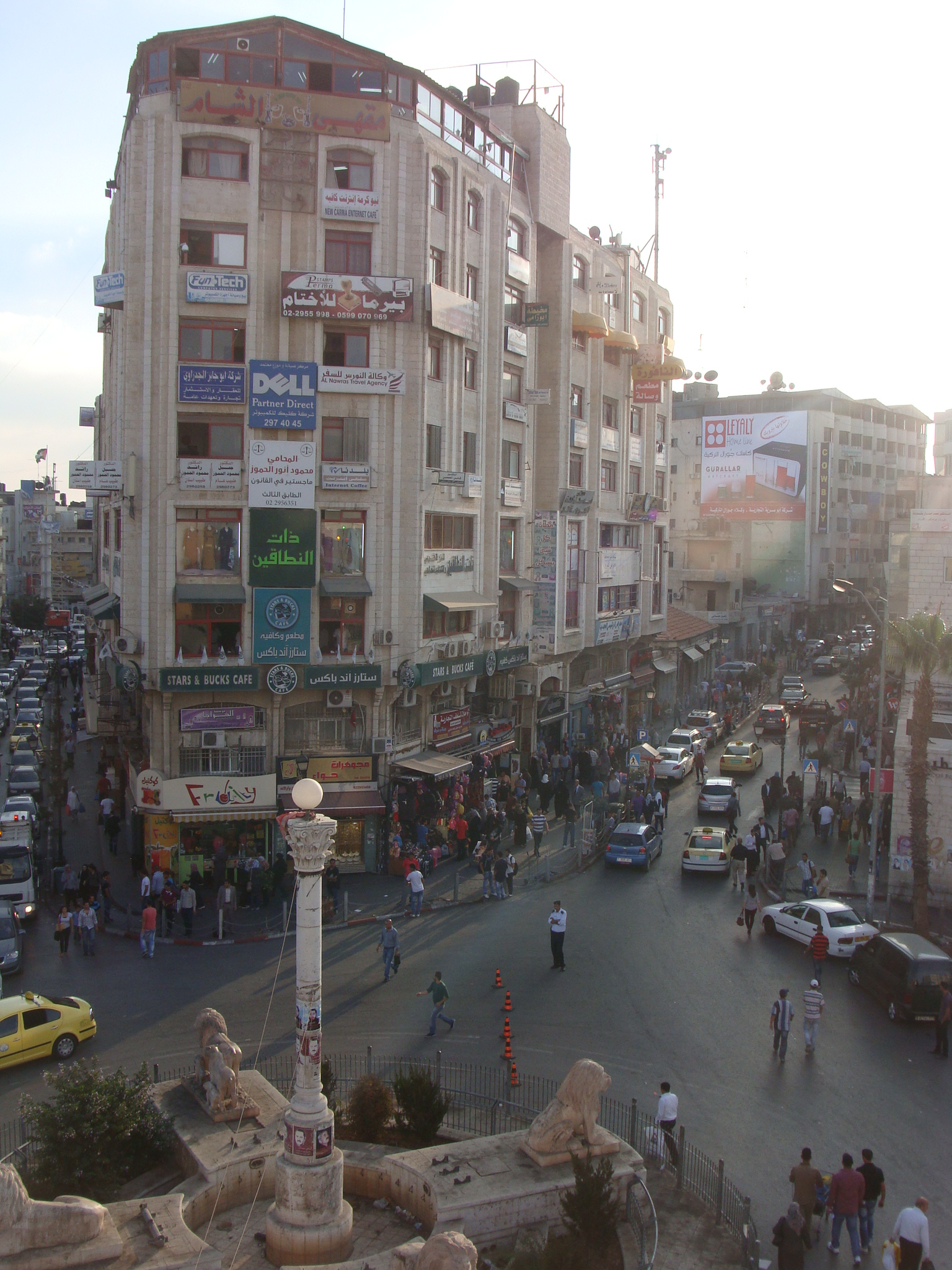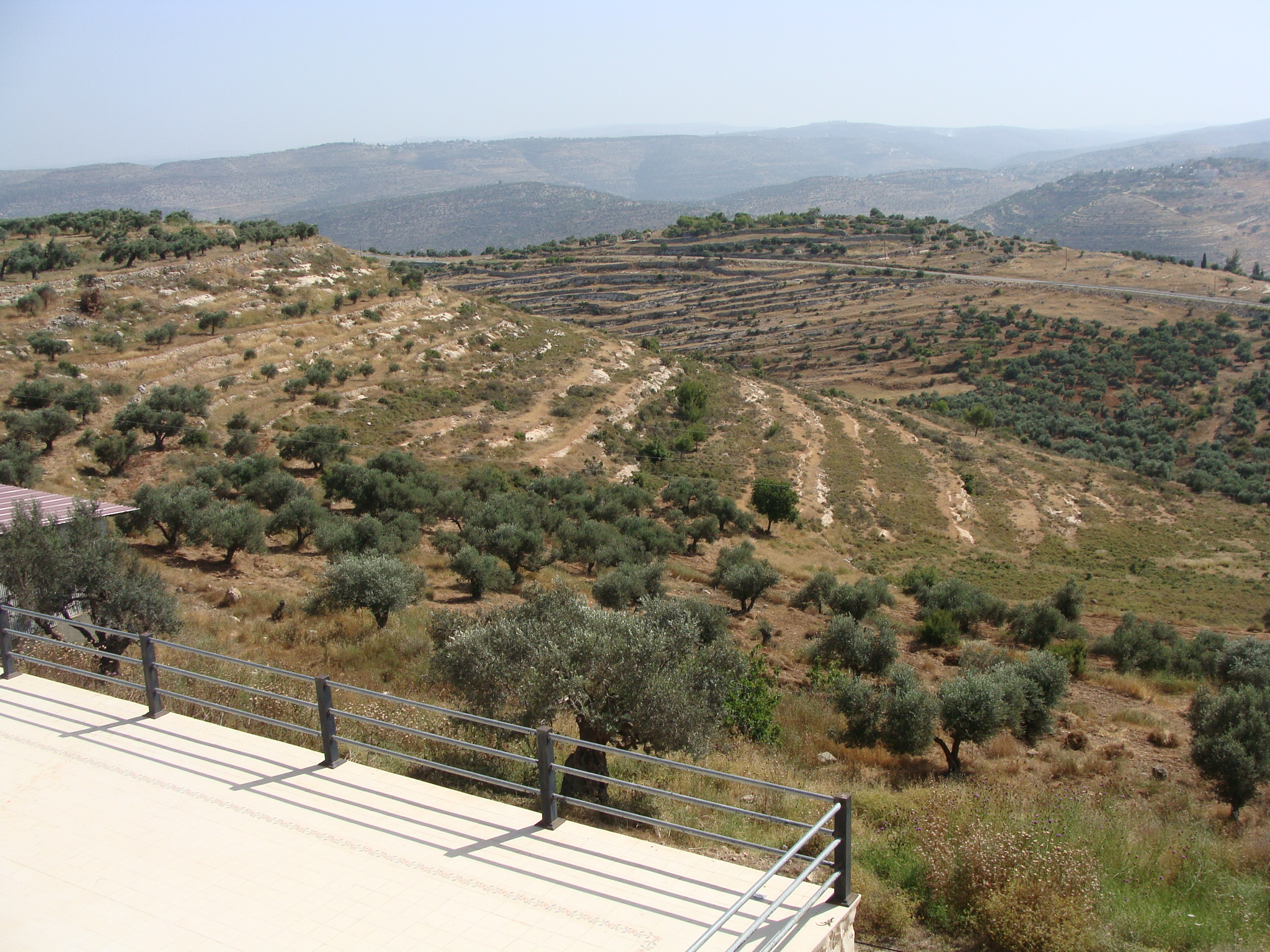The National, 29 November 2014
When I left Palestine this summer, I was relieved to leave the Israeli flag behind. No more blue and white ensign snapping at military checkpoints. No more Star of David standing high over army bases. Saying goodbye to the Israeli flag would also mean putting an end to my ambivalence about it.
Upon seeing it, there was always a moment of familiarity. After all, it bears the Star of David and I grew up with this symbol in my home. As a child it dangled from my neck in the form of the Hebrew pendant – passed down from my great-grandmother – that my mother made me wear.
But the same symbol enraged me. How dare these Zionists appropriate my religion, my culture, my family and the Hebrew language? The language is not theirs. It belonged to another one of my great-grandmothers, who lived in Eastern Europe and recorded all of the family’s deaths and births, not in Yiddish but in poetic Hebrew. She marked all these events on a piece of paper that she carried with her to the New World, Hebrew pressed to her bosom as she crossed an ocean. The language belonged to her. It belonged to all of us.
How dare the Zionists put the Star of David on their flag? How dare they, under the false pretence of ensuring the safety of my people, occupy another? How dare they besmirch Judaism in this way? Not only have they occupied Palestine, they’ve occupied Jewish identity.
Shlomo Sand’s latest book, How I Stopped Being a Jew, could be understood as a reaction to both occupations. It also seems like a response to a state that has become open about its preference for an ethnocracy over a democracy, as evinced by the “Jewish nation-state” bill.
If passed, the bill, which received overwhelming support from Benjamin Netanyahu’s cabinet, would result in the equivalent of a constitutional amendment declaring Israel the nation-state of the Jewish people. This is alarming considering that approximately 20 per cent of its citizens are non-Jewish Arabs. It also has implications for migrant workers and African refugees who live in Israel.
Sand, an Israeli professor at Tel Aviv University, is a historian and the author of The Invention of the Jewish People. In How I Stopped Being a Jew, which is not nearly as personal as the title suggests, Sand notes a number of moments that made him question his secular Jewish identity as well as the privilege that comes with that identity. Two particular experiences stand out.
The first was his daughter’s difficult questions about a Jewish holiday that celebrates, among other things, the death of non-Jews and Sand’s struggle to answer her.
The second was witnessing discrimination at Tel Aviv airport. As Sand breezes through security, he sees a Palestinian citizen of Israel detained. As a non-Jew, she is automatically considered suspect.
In the pages that follow this recollection, Sand writes: “What is the meaning, then, of being ‘Jewish’ in the State of Israel? There is no doubt about it: being Jewish in Israel means, first and foremost, being a privileged citizen who enjoys prerogatives refused to those who are not Jews, and particularly those who are Arabs.”
This seems to be the heart of the book and it’s also an apt description of the conflict. But it doesn’t come until too late in the book. Rather than using his personal experiences to tease out the inherent contradiction of the “Jewish and democratic” state – which seems the most powerful way to question the status quo – he spends most of the book engaged in an odd attempt to prove that there is no such thing as a secular Jewish identity.
I get his reasoning. Sand is hitting at the very foundation of the Zionist project. The early Zionists, who had internalised anti-Semitic stereotypes prevalent in Europe at the time, wanted to shake off the yoke of the diaspora Jew.
The diaspora Jew, or the image of one, was that of a frail figure, pale, weak and easily intimidated. In Eretz Yisrael (the land of Israel), the new Jews would stand strong. And they would be secular.
Sand, however, doesn’t manage to convince that there is no such thing as secular Judaism. In part because, as he acknowledges, secular Jewish identity is hard to define, making it equally hard to disprove.
He runs through a list of things that might be considered secular Judaism, shooting them all down. However, the list is by no means exhaustive and Sand can’t possibly anticipate the many ways individuals construct their secular Jewishness.
And, in some places, Sand resorts to assertions that unintentionally play into the Zionists’ hands. He takes care to say that he is not conflating Judaism with Zionism. But because his rejection of secular Judaism stems, in part, from his reaction to Zionism, he’s acknowledging and tacitly agreeing to the Zionists’ claim on Jewish identity.
The book is at its most confusing and most powerful in its final pages when Sand describes his connection to Tel Aviv and the Hebrew language.
“I inhabit a deep contradiction,” Sand admits. “My deep attachment to the place serves only to fuel the pessimism I feel towards it. And so I often plunge into a melancholy that is despondent about the present and fearful for the future.”
But I’d venture to say that many readers won’t make it to the end of his book, because he’s spent most of it alienating the people who most need to be a part of this conversation: self-defined secular Jews.
Rather than rejecting secular Judaism and engaging in the counterproductive business of attempting to delegitimise others’ identity – which will only make them cling to it more tightly – Jewish identity should be detached from Israel and understood as something that has and can transcend time and place.
The nation-state bill only underlines the importance of doing this.
If Jewishness was understood as something that isn’t dependent on land, Israel would be forced to loosen its grip on Judaism. The state could then instead embrace democracy and all of its citizens – whether they are Jewish, Palestinian, or just Israeli, as Sand defines himself.
Sand would like to see this happen within the context of a two-state solution that would, eventually, lead to an Israeli-Palestinian federation. I’d like to see this happen under the auspices of one democratic state. But, ultimately, we both hope – hope against hope – for the same thing: freedom for all of those who live between the river and the sea.
*Illustrative photo by James Emery, via Flickr
